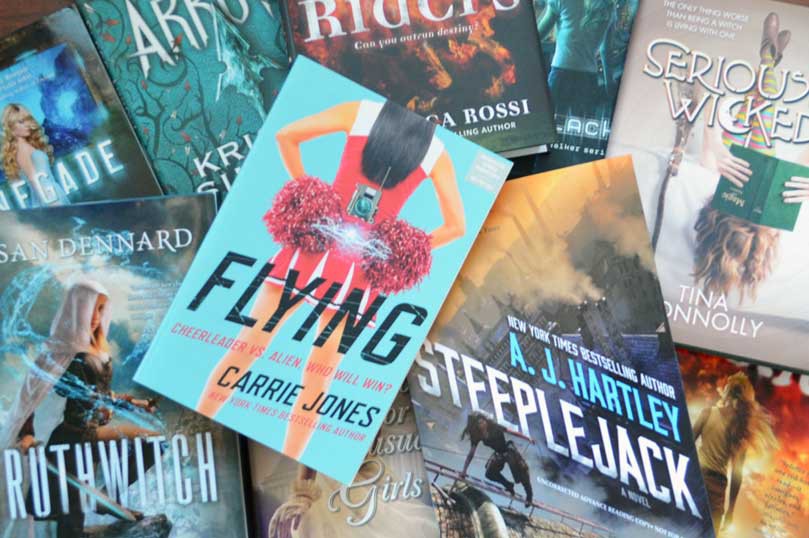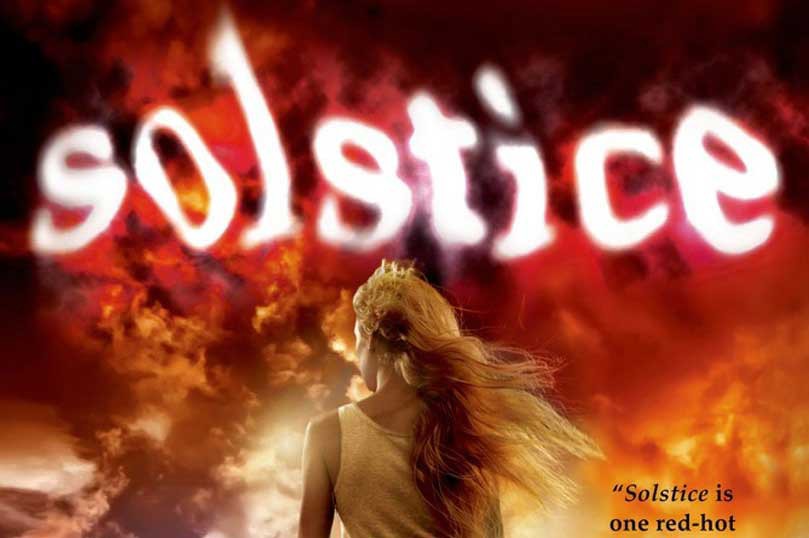Why Read Dystopian Novels?

Written by P.J. Hoover
A world in which children are sent to battle to the death for our amusement. One in which the moon has been knocked from its orbit. And another in which scientists weed out inferior humans. Recent young adult literature is filled with grim scenarios of utter destruction. My newest book, Solstice, is a dystopian novel (with a huge mythological twist) set in future Austin, Texas during a time when global warming is destroying the earth. Daily temperatures are 115 degrees F or higher, and giant retractable domes have been built over the city to help protect those who live there. The global heating crisis is a slow, yet severely damaging, process; in this world, food and water shortages are the norm and government officials are constantly looking for an edge.
As the mother of two kids, I am constantly looking for reading material with content appropriate for their ages. It used to be easy in elementary school, but as they reach the upper grades, I struggle with the issue of how young is too young to read about certain topics or to read certain books. It’s one thing to write the books, but how do I feel about my own kids reading these dystopian tales?
Now I’ll be honest. I immediately put Solstice in the hands of my middle-schooler, and not just because I am the author. I adore dystopian novels, and I want to share that love with my kids. My bookshelves are lined with these types of novels, and my middle-schooler devours them just like I do.
Consider this. A world in which a power mad dictator kills millions. One in which child soldiers are sent to war. And another in which slavery is an acceptable norm. These things really happened. Humans really treated each other this way. The history of the earth is filled with dystopian times, and the stories from these eras are brutal and cruel. And though in concept, these stories are not very different from how so many dystopian novels portray the world, I am reluctant to introduce these horrors to my children.
It’s one thing to escape with a book and enter a fantastical world. Readers can immerse themselves in a world of peril, have great adventures, and be the hero. In Solstice, the reader can follow along as the main character, Piper, escapes to the Underworld in an attempt to save her best friend from death cause by the global heating crisis. They can feel Piper’s panic, fear, and uncertainty. And when the story concludes, readers can return to the safety of their own world and know that the story was make-believe.
It’s another thing to enter a story about the real world. At the end of the story, there is nowhere to return to. The world remains the same world in which the reader lives, except it has now been darkened.
Why do I feel okay about letting my kids read dystopian literature? Because facing reality is an inevitable part of growing up. It can’t be ignored. And in these stories, be they real or fictional, in times of darkness, there are people who are heroes who bring light. No matter how dark the situations may be, there is hope. And that’s what we see in dystopian young adult novels. There is always hope. And that’s why you want your kids to read them.
…………………………
From the Tor/Forge June 17th newsletter. Sign up to receive our newsletter via email.
…………………………
More from the June 17th Tor/Forge newsletter:





